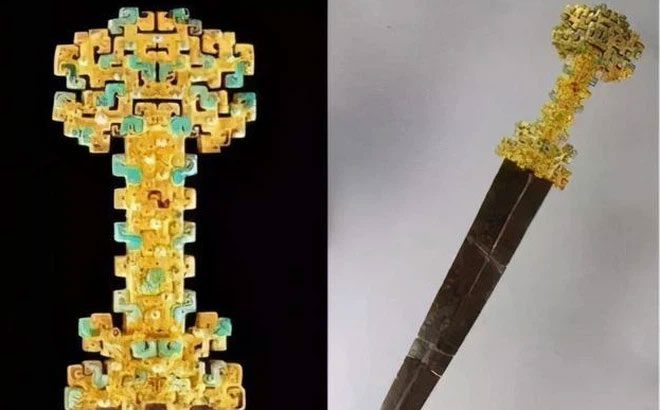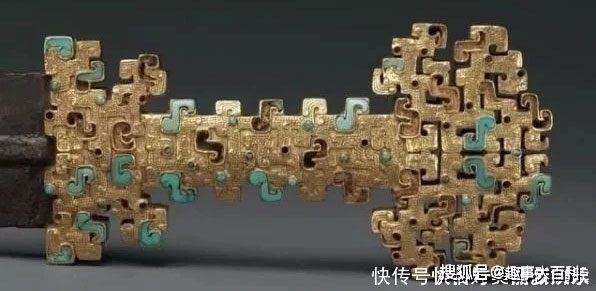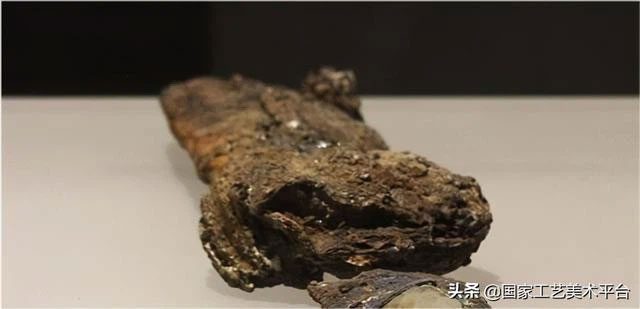In the early 1990s, an archaeological team discovered an ancient tomb in Baoji City, Shaanxi Province – a site regarded as a sacred archaeological treasure in China. During the initial rescue excavation, the experts found numerous grave robbing pits on the sealed earth layer of the tomb, indicating that this tomb had been visited by grave robbers on multiple occasions.
The good news is that this special tomb complex was constructed in sections, and all intruders had only accessed a small side tomb, while the main tomb and the main corridor of the complex remained completely untouched. It must be acknowledged that the design of the tomb is exceptionally clever and admirable!
The experts quickly found a way into the main tomb, where they were awestruck by the magnificent sight before them. The main tomb was bright and filled with an abundance of gold and silver jewelry, numbering in the hundreds. The archaeological team felt as though they had stumbled into a fairyland, carefully examining each beautiful artifact crafted from gold and silver.
By observing the characteristics of some of the burial items, the experts determined that this was a Western Zhou tomb (1046 BC – 771 BC), a golden age of slave society in China, marked by significant advancements in social productivity, agriculture, and culture compared to previous eras.
Sadly, there was no inscription in the tomb, so future generations could not determine who the tomb belonged to, but it surely belonged to a wealthy noble or a member of the Western Zhou royal family.


The sword’s hilt weighs 6 kg and is made of solid gold with intricate jade details. (Photo: Sohu).
While quickly searching for treasures in the tomb, everyone in the archaeological team was captivated by a golden sword found in a pit of earth next to the tomb corridor. In fact, the sword had been completely broken at the blade, leaving only the hilt, which alone weighed a hefty 6 kg.
This hilt is made of solid gold, intricately carved into many delicate hollow sections, adorned with dozens of jade pieces from the Shang and Zhou dynasties. Truly, few can resist the beauty of this treasure!
“This pile of scrap metal is the national treasure!”
After discovering the solid gold hilt, the team leader instructed the members to continue digging along the tomb corridor and quickly uncovered a rusty sword blade. The sword blade had been buried in the damp earth for so long that it had oxidized to a pitiful state, resembling nothing more than a pile of scrap metal at first glance.
Unexpectedly, upon seeing it, the team leader was overjoyed: “This pile of scrap metal is the national treasure, the greatest achievement of this excavation!”

This sword blade is a testament to the significant advances in metalworking skills of ancient people. (Photo: Sohu)
It turned out that this was the iron blade of the above solid gold sword. 2,900 years ago, while gold was considered a luxury, it was merely a resource that humans could extract; in the early days of civilization, iron was the true testament to human industrial strength.
This sword blade is evidence of the highly skilled metalworking of ancient times, showcasing the intelligence of generations past. “Gold is soft, iron is hard,” and it was the superior metalworking techniques of humans that created many tools for the development of society later on.
The sword discovered in the Western Zhou tomb has been named “Jin Bing Tie Dao”, meaning the sword with a golden hilt, and is now preserved in the Nanjing Museum, located in Nanjing, China.




















































